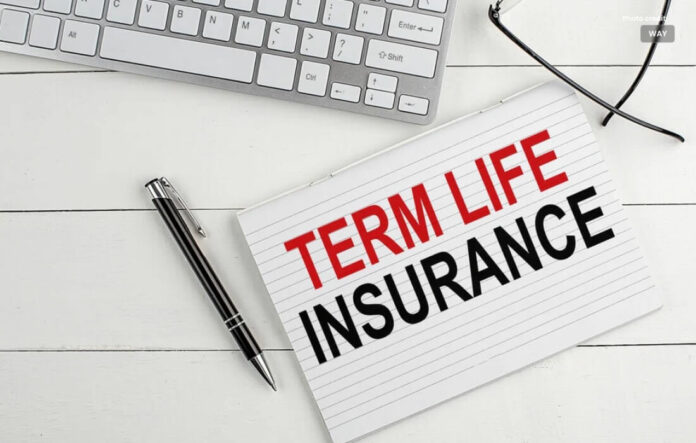Term Life Insurance: Affordable Protection for Your Family’s Future.
Term life insurance is a flexible and affordable option that offers your family security for a predetermined amount of time.
What is Term Life Insurance?
Term life insurance is a kind of life insurance policy that offers protection for a predetermined time frame, or term. Term life insurance is intended to safeguard your loved ones for a set period of time, such as 10, 20, or 30 years, as opposed to whole life insurance, which provides coverage for life. The policy gives the beneficiaries a death benefit if the insured person dies within the term.
Important Term Life Insurance Features:
- Affordability: A wider spectrum of people can get term life insurance because it is typically less expensive than whole life insurance.
- Fixed Premiums: Your premiums are set for the duration of the term, giving you financial planning predictability.
- Customized Terms: Depending on your situation, you can select a period that is as short as a year or as long as thirty years.
- Death payment: The policy provides a tax-free death payment to the beneficiaries in the event that the insured person passes away during the term.
- No Cash Value: Term life insurance only offers a death benefit; it does not grow in value over time. It is not a savings product.
Why Select Insurance for Term Life?
- Protecting Your Loved Ones: The main goal of life insurance is to make sure that in the event of your death, your family will have enough money. This is successfully achieved with term life insurance for the selected term.
- Affordability: Term life insurance is quite affordable, which makes it a great option for people with tight budgets or certain financial objectives.
-
Temporary Needs: You can customize term life insurance’s to address your short-term financial obligations during the crucial years, like a mortgage, school costs, or other debts.
- Flexibility: You can modify your coverage of term life insurance’s to meet your changing needs. You can choose the term that best fits your budget.
- Estate Planning: It can be a crucial part of estate planning, giving your loved ones the tools they need to handle debts, taxes on inheritances, and other financial issues.
Selecting the Appropriate Term Length
When acquiring term life insurance, choosing the right term length is an important choice. The duration should align with your financial goals and the amount of time required to achieve them. Here are some such situations to think about:
- 10-Year Term: This option is best for short-term debt repayments like credit card or auto loans.
- 20-Year Term: Fit for people who have medium-term debts, such as mortgages or college tuition for their kids.
- 30-Year Term: Financial obligations over the long term, such as maintaining a family, paying off a mortgage, or funding a child’s education.
- Policies that are renewable and convertible: Certain term life insurance’s plans have choices for renewal and conversion, letting you modify your coverage as necessary.
How to Calculate the Appropriate Level of Coverage
Determining the appropriate level of coverage is essential. It need to be enough to sustain your family and pay for your debts. This choice is influenced by multiple factors:
- Income Replacement: Count the amount of your earnings that your family would have to make up for you if you were not there.
- Debts and Expenses: Take into account your current debts, regular spending, and any future financial requirements, such as retirement or college tuition.
- End-of-Life Expenses: These may include hefty funeral and burial fees.
- Inflation: Make sure your coverage amount is sufficient for the duration of the policy by factoring in inflation.
-
Health and Lifestyle: Your age, health, and lifestyle may also influence your coverage needs.
Getting Term Life Insurance Application
There are various steps involved in applying for term life insurance:
- Investigate and Compare: Start by looking into different insurance companies and evaluating quotations. Seek out trustworthy businesses that have a track record of sound financial management and customer satisfaction.
- Select a Term: Choose the term that best suits your financial goals. Don’t forget to account for your age, health, and the amount of time it will take to reach your financial objectives.
- Determine Coverage level: Determine the necessary level of coverage based on anticipated financial demands, debts, expenses, and replacement of income.
- Medical Exam: In order to evaluate your health and establish your premium rate, many term life insurance’s policies demand a medical check.
- Submission of the Application: Complete the application, giving precise details about your lifestyle and health.
- Underwriting: To ascertain your eligibility and premium rate, the insurance company examines your application and the findings of your medical examination.
-
Issuing the Policy: The insurance provider approves your policy and you begin making premium payments.
- Frequent Premium Payments: To maintain your policy in effect, pay your premiums on time.
Conclusion
A useful instrument for protecting your family’s financial future over a certain time span is term life insurance’s, particularly if you have short- to medium-term financial obligations. For many people and families, its flexibility, cost, and ability to customize coverage make it a desirable alternative.
Think carefully about your financial objectives, the right term length, and the coverage amount when selecting term life insurance. Comparing estimates from various insurance companies is also necessary to make sure you’re getting the best deal possible.
In the end, having term life insurance’s gives you piece of mind, knowing that your loved ones will have enough money to survive even if you pass away. Thus, make the required preparations to ensure your family’s future and give them the defense they need.




